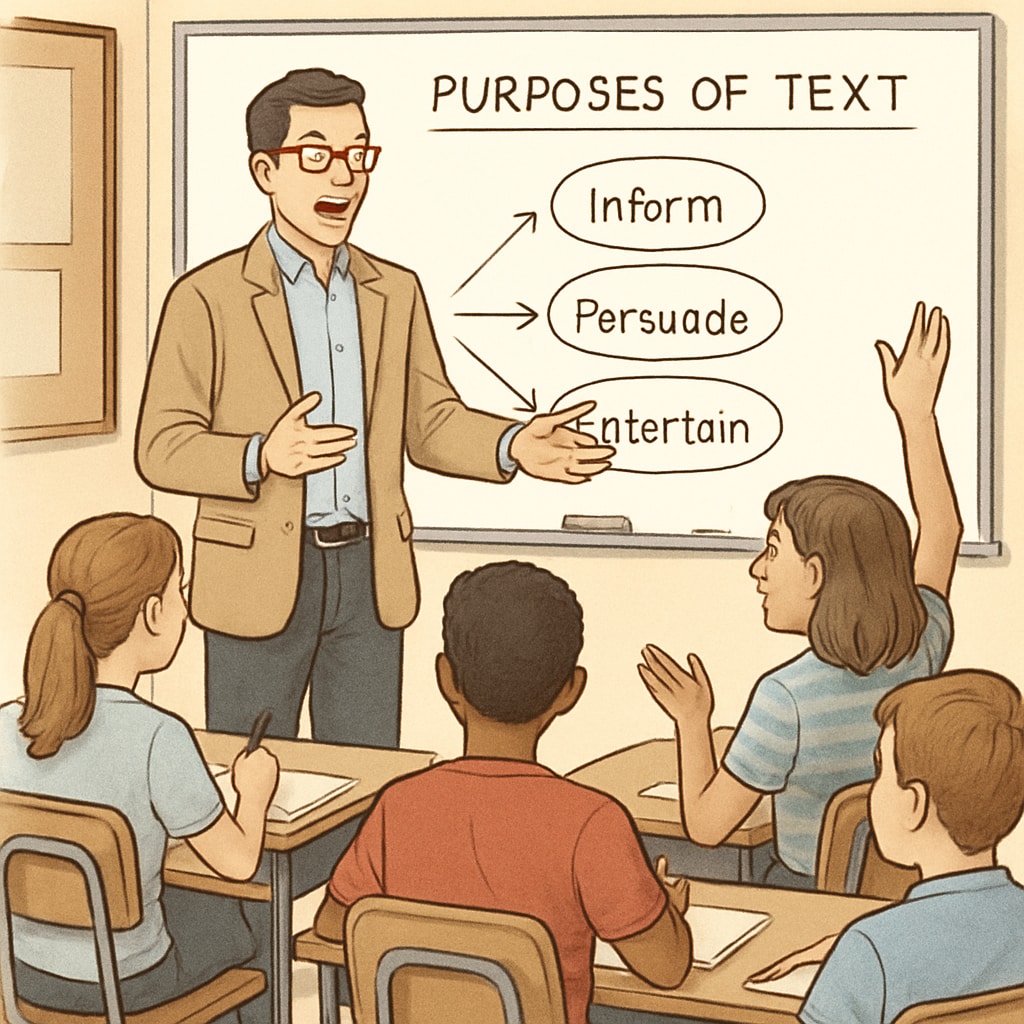In the Functional Skills English reading exam, many students struggle to identify the purpose of a given text. Understanding whether a text is informational, explanatory, or persuasive is a critical skill that can significantly impact exam success. This article explores key characteristics of these text types and provides actionable strategies to improve your ability to discern their purpose effectively.

Understanding Text Purposes: Inform, Explain, Persuade
Every text has a specific purpose, and recognizing this is vital for effective reading comprehension. To start, let’s break down the three main categories:
- Informational Texts: These provide factual information or data. Examples include news articles, reports, and manuals. They usually lack personal opinions and focus on delivering unbiased content.
- Explanatory Texts: These aim to clarify or elaborate on a topic. Tutorials, guides, and FAQs fall into this category. Their language is often straightforward, with step-by-step instructions or detailed descriptions.
- Persuasive Texts: These are designed to influence the reader’s thoughts or actions. Advertisements, opinion pieces, and political speeches are typical examples. They often use emotive language, rhetorical questions, and strong arguments to sway the audience.
Recognizing these distinctions is the first step toward mastering the Functional Skills English reading exam.
Strategies for Identifying Text Purpose
To effectively identify the purpose of a text, follow these practical strategies:
- Analyze the Vocabulary: Pay attention to the words used in the text. Informational texts often include technical terms, while persuasive texts lean toward emotionally charged language.
- Look for Structural Clues: The layout can provide hints. Bullet points and headings are common in explanatory texts. Persuasive texts may use bold statements or call-to-action phrases.
- Examine the Tone: Determine whether the text feels neutral, instructional, or opinionated. This can help you categorize it accurately.
- Identify the Target Audience: Consider who the text is intended for. A technical report might aim to inform professionals, while an advertisement targets consumers.
By applying these strategies, you can navigate texts with greater confidence and accuracy during exams.

Common Pitfalls and How to Avoid Them
Even with the right strategies, students often encounter challenges. Here are some common pitfalls and tips to overcome them:
- Mistaking Opinion for Fact: Always verify whether the text includes evidence or data. Persuasive texts may disguise opinions as facts, so stay alert.
- Overlooking Context: The context in which the text appears can offer significant clues. For example, a text on a website promoting a product is likely persuasive.
- Ignoring Subtle Intentions: Some texts serve dual purposes. For instance, a guide might inform but also subtly persuade readers to adopt a specific method.
To avoid these pitfalls, practice with diverse text samples and familiarize yourself with different writing styles.
Preparing for Success in Functional Skills English Exams
Preparation is key to mastering reading comprehension. Here are some tips to help you excel:
- Practice with Past Papers: Review past exams to understand the types of texts commonly included.
- Build Vocabulary: Expanding your vocabulary will make it easier to decode text purposes.
- Work on Timing: Allocate sufficient time to analyze text purpose within the exam’s time constraints.
- Seek Feedback: Practice identifying text purposes with teachers or peers and ask for constructive feedback.
With these preparation techniques, you’ll develop the confidence to tackle Functional Skills English reading exams successfully.
Conclusion: Identifying text purpose is a fundamental skill for students taking Functional Skills English reading exams. By understanding text types, applying strategies, and avoiding common pitfalls, you can significantly enhance your reading comprehension abilities. Practice regularly and stay focused, and exam success will follow.


